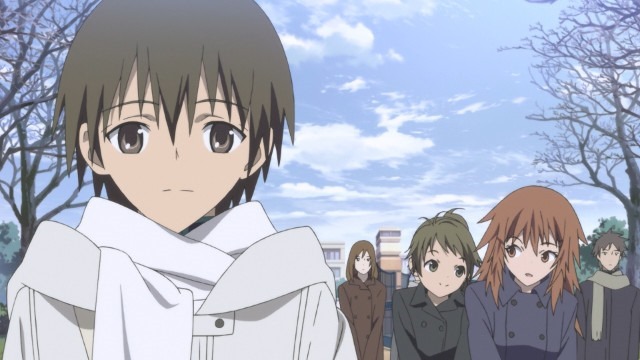Wherein I review a pair of old-school series, a new-school series, and an OVA that wonderfully mixes old and new styles.
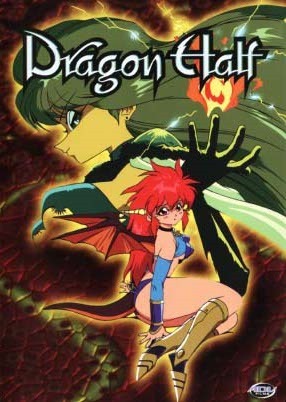 As part of a little “classics” journey to watch some things I missed back in the day, Dragon Half is token nineties anime material through and through. It has that nineties style, with the sharper angles than your softer digital fare today, as well as plenty of color, reliance on visual glow effects, and lots of SD to keep animation costs lower. It’s wacky, silly, and doesn’t resolve much of anything, but hey it’s just a little two-shot OVA adapted from a much longer running manga. What it does have is good ol’ fashioned style, humor, and just that “different” feel that is so nice to get after the myriad cookie-cutter high-school-based slice-of-life/rom-com series.
As part of a little “classics” journey to watch some things I missed back in the day, Dragon Half is token nineties anime material through and through. It has that nineties style, with the sharper angles than your softer digital fare today, as well as plenty of color, reliance on visual glow effects, and lots of SD to keep animation costs lower. It’s wacky, silly, and doesn’t resolve much of anything, but hey it’s just a little two-shot OVA adapted from a much longer running manga. What it does have is good ol’ fashioned style, humor, and just that “different” feel that is so nice to get after the myriad cookie-cutter high-school-based slice-of-life/rom-com series.
Does it stand up to two decades worth of evolution in the world of anime? Well, sorta. The animation is good enough (mostly) that it won’t stand out as atrociously “pre-digital” like some of the TV series from the nineties do (I love you, Kodomo no Omocha, but I’m talking about you). The music, if anything, is probably the biggest indicator, with some boopy MIDI fare and a synth-heavy remix of a Beethoven piece complete with nonsensical Engrish-sprinkled lyrics. The cartoony nature of the action might also be a bit dated, but I think this is only because so many series now fail to really utilize this strength of animation. Sure, they might have some sweat drops, colossal punches with flying through the sky, or giant pink head bruises, but so few really make use of the malleable nature of drawn characters like so many old Warner Bros. or Disney cartoons did. I suppose this is less a generational thing and more just stylistic differences, and today anime tends to lean heavy on the on-model easy-to-reproduce drawings.
At any rate, Dragon Half is a fun hour-or-so long diversion about a cute half-dragon half-human girl and her weird predicaments being a half-breed. It hardly stands above much today but if you stop and consider the timing of its release, especially in the US, then you can maybe appreciate a little the impact it had on Western fans and why it is, for those few older anime veterans, more than just a little nostalgic.
 On the more serious end we have the wonderful little three-part OVA Gunsmith Cats, which trades cartoonishness for a Western-style hard-nosed crime-fighting girl-duo setup. The nineties is still strong with this one, though, as evidenced by the heavy stylization on guns, girls, and the mean-streets of Chicago, replete with thugs, goons, and hoodlums that need shooting. Don’t forget the lusciously detailed and faithful Shelby Mustang GT they drive.
On the more serious end we have the wonderful little three-part OVA Gunsmith Cats, which trades cartoonishness for a Western-style hard-nosed crime-fighting girl-duo setup. The nineties is still strong with this one, though, as evidenced by the heavy stylization on guns, girls, and the mean-streets of Chicago, replete with thugs, goons, and hoodlums that need shooting. Don’t forget the lusciously detailed and faithful Shelby Mustang GT they drive.
Gunsmith Cats makes me happy, because it is a series that has a strong sense of style and identity and purpose and it sticks to that and delivers well. It’s got action, a bit of comedy, and yes even sexiness, and it manages to do this without feeling like pandering garbage. The music is fitting, the animation (especially the driving chase scenes) is often gorgeous even by today’s higher standards, and the whole package just feels solid.
Is it short? Well, yeah, but OVAs were common and more easily localized in the US being conveniently on one VHS tape. But what’s there is definitely good and worth checking out sometime. And does anyone else think the GSC opening maybe, just a little bit, influenced the later Cowboy Bebop opening?
 Although not another nineties series, it’s the late 2000s six-part web-series Time of Eve, later made into a full theatrical movie. ToE takes place in the near future, where everyday androids exist to serve all sorts of roles, from construction, teaching, childcare, and of course general housework. The show focuses on a specific teenage boy’s relationship with their “houseroid” and the world of android ethics. What rights should they enjoy? Do they actually care? Have personalities? Should we treat them like impersonal tools or more like humans? Where does the line get drawn? The bigger ethics questions form the basis for both the backdrop of the world as well as the primary struggle for a lot of the cast. Even so, it manages to still be very character-driven as well, as we see our protagonist come to terms with how he should treat his android and how he should let its presence affect him as well.
Although not another nineties series, it’s the late 2000s six-part web-series Time of Eve, later made into a full theatrical movie. ToE takes place in the near future, where everyday androids exist to serve all sorts of roles, from construction, teaching, childcare, and of course general housework. The show focuses on a specific teenage boy’s relationship with their “houseroid” and the world of android ethics. What rights should they enjoy? Do they actually care? Have personalities? Should we treat them like impersonal tools or more like humans? Where does the line get drawn? The bigger ethics questions form the basis for both the backdrop of the world as well as the primary struggle for a lot of the cast. Even so, it manages to still be very character-driven as well, as we see our protagonist come to terms with how he should treat his android and how he should let its presence affect him as well.
The plot hinges on him finding a secluded café, eponymously named Time of Eve, where the one house rule is “no discrimination”. Androids don’t have to play “robot” and can relax and act, well, human. As a result, he quickly finds that the robotic talking androids he normally see are perfectly capable of acting like normal people, to the point that he cannot tell who there is a human and who is actually an android.
ToE is a fairly good looking piece too, with tons of little futuristic details to the environments, which are often given very nice sweeping 3D camera treatments. Character designs tend to be a bit more realistic than is typical (lots more roundness, for instance) and the CG stuff tends to be well integrated. Music is also pretty good and fits the style, sweeping shots, and futurism vibe.
The length is just right, too, as it gives plenty of time to explore a lot of interesting questions and have some real character growth without ever really dragging at all. The ending sort of feels abrupt, but I think they did a good job of hinting at the greater change that will inevitably occur in several of the characters, even if it isn’t shown. If anything, I’d still definitely go for a sequel or something, though it might be better if it focused on new people or something. Unless you just cannot get over the lack of moé or whatever, you probably won’t regret trying this one. And heck, it’s short enough it won’t feel like a huge time investment.
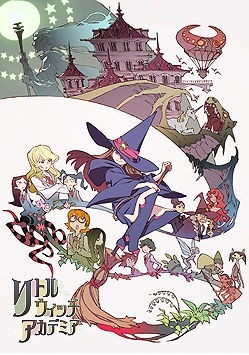 For a real short and sweet treat, there’s the beautifully produced Little Witch Academia, a mini-movie of sorts that expertly blends the cartoony power of animation with imagination, style, and spectacle. It evokes a mix of old-school Disney feel to the animation but yet distinctly still modern and anime.
For a real short and sweet treat, there’s the beautifully produced Little Witch Academia, a mini-movie of sorts that expertly blends the cartoony power of animation with imagination, style, and spectacle. It evokes a mix of old-school Disney feel to the animation but yet distinctly still modern and anime.
The story is a bit simplistic and the characters are exaggerated but this tends to be more useful than not given its short 20-something minute run. There isn’t a lot of time to develop characters, so the fact that they all are mostly caricatures allows them to ooze their personality with every movement and line delivery and speeds up the whole “getting to know the cast” bit. In fact, it lets them do this while setting up the plot. This proves to be a good use of time, so there’s nary a bit of drag and lots to absorb despite the brief length.
And did I mention that animation? Colorful, fluid, fun, yet detailed. The mix of Western and Eastern styles is such a refreshing pleasure to behold, and the expertise with which the designs and movements of characters explain their character before they even utter a word is something you usually only see Disney pull off so well (admittedly, their renaissance phase more so) with Don Bluth a definite close second.
If there is anything negative to be said it is the length again. Too short! Rather, the whole thing feels like a test run, a preview of what could be possible. In fact, this seems to be just the case. Trigger is a relatively new animation company founded by some industry veterans and they just recently wrapped up a successful Kickstarter campaign to raise funds for something more. So far, it is planned to be another 20-ish minute short, but I get the feeling this is all to raise awareness of their skills and to garner interest with the goal of a feature length piece some day. Here’s to hoping that day comes sooner rather than later because Trigger seems too talented to let it to go to waste.
As of this writing, you can watch Time of Eve and Little Witch Academia for free on Crunchyroll. For the nineties OVAs, of course they are long since out of print I’m sure, so either find an old VHS tape, maybe there is a DVD re-release, or they’re probably on YouTube or something these days.
 Anime centered on MMORPGs aren’t anything new, especially in the wake of the highly successfully
Anime centered on MMORPGs aren’t anything new, especially in the wake of the highly successfully 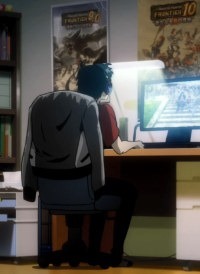 A lot of fantasy shows in general, beyond just anime ones, spend a lot of time “world-building”. You know, showing off creatures, races, magic, and political details, all as part of the fantasy appeal. A good one will weave this into a story, allowing these bits to be revealed while still primarily focusing on characters and plot in the short-term. Ixion Saga is a show that doesn’t give two shits about all that. Sure, it seems like somebody over there did write and come up with a lot of those typical fantasy details, be it about the world, the various political entities, and even an ancient race of powerful beings called Ixions. But 95% of the time, all of that fluff, even including the fact that Kon is in a different world and should be more distressed or eager to get back home or at least figure out why he’s even there, gets ignored in favor of comedy.
A lot of fantasy shows in general, beyond just anime ones, spend a lot of time “world-building”. You know, showing off creatures, races, magic, and political details, all as part of the fantasy appeal. A good one will weave this into a story, allowing these bits to be revealed while still primarily focusing on characters and plot in the short-term. Ixion Saga is a show that doesn’t give two shits about all that. Sure, it seems like somebody over there did write and come up with a lot of those typical fantasy details, be it about the world, the various political entities, and even an ancient race of powerful beings called Ixions. But 95% of the time, all of that fluff, even including the fact that Kon is in a different world and should be more distressed or eager to get back home or at least figure out why he’s even there, gets ignored in favor of comedy. This would be more of a problem if the comedy wasn’t pretty good. Ixion Saga is a show that likes to goof around, both in antics as well as the bizarre cast. Even so, it manages to still feel mostly MMO-ish, with the ridiculous AlmaGear weapons, the adventures, the princess, and the Incognito. But it does fumble a bit trying to juggle mostly-comedy with just a teensy bit of drama. It doesn’t happen too often but occasionally the show tries to build a bit of tension or drama, usually with the politically-motivated wedding of the princess or more often with the Incognito’s attempts to capture said princess before she can have her diplomatically-influenced marriage. Since nobody is ever seriously hurt or in danger it can get a little tiresome when they try this. Thankfully, it isn’t often, and the focus is far more on the antics and encounters and adventures and so on.
This would be more of a problem if the comedy wasn’t pretty good. Ixion Saga is a show that likes to goof around, both in antics as well as the bizarre cast. Even so, it manages to still feel mostly MMO-ish, with the ridiculous AlmaGear weapons, the adventures, the princess, and the Incognito. But it does fumble a bit trying to juggle mostly-comedy with just a teensy bit of drama. It doesn’t happen too often but occasionally the show tries to build a bit of tension or drama, usually with the politically-motivated wedding of the princess or more often with the Incognito’s attempts to capture said princess before she can have her diplomatically-influenced marriage. Since nobody is ever seriously hurt or in danger it can get a little tiresome when they try this. Thankfully, it isn’t often, and the focus is far more on the antics and encounters and adventures and so on.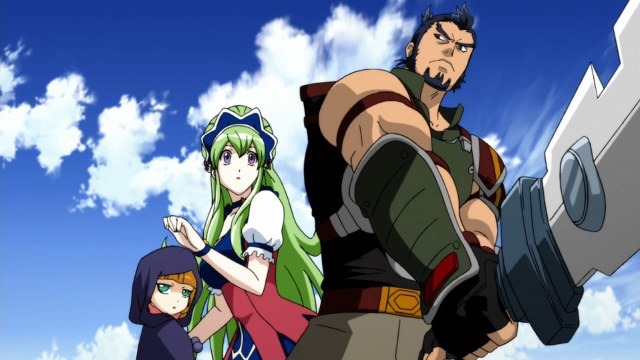

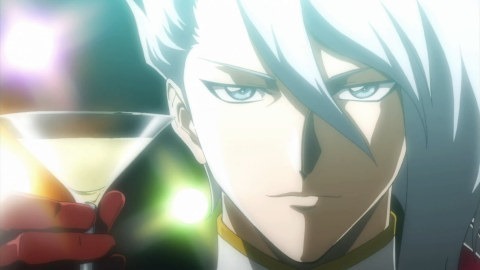
 Ano Hi Mita Hana no Namae o Bokutachi wa Mada Shiranai (loosely officially translated as Ano Hana: The Flower We Saw That Day) is, aside from a stupidly long title, actually a pretty decent watch. It’s the kind of soap opera that has enough nuances of story and character and so on that generally garners longer, more thought-provoking reviews. But, alas, I can’t find a lot to say about this one.
Ano Hi Mita Hana no Namae o Bokutachi wa Mada Shiranai (loosely officially translated as Ano Hana: The Flower We Saw That Day) is, aside from a stupidly long title, actually a pretty decent watch. It’s the kind of soap opera that has enough nuances of story and character and so on that generally garners longer, more thought-provoking reviews. But, alas, I can’t find a lot to say about this one.
 Hentai Ōji to Warawanai Neko. (The "Hentai" Prince and the Stony Cat.) follows the hijinks of the eponymous prince, Yokodera Youto, as he makes a wish at a cat altar and surprisingly it comes true… sort of. As a result, he loses his façade and begins blurting out everything à la Jim Carrey from Liar Liar. Meanwhile, our lead girl, Tsutsukakushi Tsukiko, loses all her visible emotions behind a poker face. And it goes from there with the cat statue’s wish-granting providing the main driving force for what eventually becomes a bit of a past-revealing intertwined relationship thing. It’s actually not a terrible premise and it allows the show to have a lot of fun with its characters.
Hentai Ōji to Warawanai Neko. (The "Hentai" Prince and the Stony Cat.) follows the hijinks of the eponymous prince, Yokodera Youto, as he makes a wish at a cat altar and surprisingly it comes true… sort of. As a result, he loses his façade and begins blurting out everything à la Jim Carrey from Liar Liar. Meanwhile, our lead girl, Tsutsukakushi Tsukiko, loses all her visible emotions behind a poker face. And it goes from there with the cat statue’s wish-granting providing the main driving force for what eventually becomes a bit of a past-revealing intertwined relationship thing. It’s actually not a terrible premise and it allows the show to have a lot of fun with its characters.

 Little Busters! is
Little Busters! is 
 Aiura is a series I almost forgot to review because it was so short. Is it forgettable? Well… I guess so. That’s kind of a bummer since it isn’t a bad little series. But, it is extremely short. One thing that does stick out in my memory is the intro. Steve Jobs and crabs. I’m not making this up. You’ll just have to
Aiura is a series I almost forgot to review because it was so short. Is it forgettable? Well… I guess so. That’s kind of a bummer since it isn’t a bad little series. But, it is extremely short. One thing that does stick out in my memory is the intro. Steve Jobs and crabs. I’m not making this up. You’ll just have to 
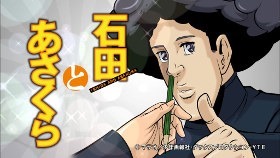 Ishida & Asakura is one of the weirder super-shorts I've watched, with only 2 minutes per episode (just like the similarly silly
Ishida & Asakura is one of the weirder super-shorts I've watched, with only 2 minutes per episode (just like the similarly silly  Sparrow’s Hotel takes another yonkoma and attempts to briefly adapt it kind of expecting it to be an experiment, a sliver of its much longer running source material. Thankfully, its focus on just a few characters and its silly simple charm make it work better than you’d expect.
Sparrow’s Hotel takes another yonkoma and attempts to briefly adapt it kind of expecting it to be an experiment, a sliver of its much longer running source material. Thankfully, its focus on just a few characters and its silly simple charm make it work better than you’d expect. Classically animated in style but with plenty of modern technical prowess, this series takes us through “that fateful summer” as our protagonist meets, falls for, and inevitably gets tangled up with a new transfer student who is as beautiful as she is eccentric. If that synopsis sounds a bit too familiar, that’s because it is. But don’t let that turn you off! While it isn’t anything new, the quality of animation, direction, music, and screenplay combine to make a solidly excellent series with only a few issues. Been itchin’ for another good romance/drama? I suggest you keep reading. (Note: haters should keep reading too, because… because don’t leave me…)
Classically animated in style but with plenty of modern technical prowess, this series takes us through “that fateful summer” as our protagonist meets, falls for, and inevitably gets tangled up with a new transfer student who is as beautiful as she is eccentric. If that synopsis sounds a bit too familiar, that’s because it is. But don’t let that turn you off! While it isn’t anything new, the quality of animation, direction, music, and screenplay combine to make a solidly excellent series with only a few issues. Been itchin’ for another good romance/drama? I suggest you keep reading. (Note: haters should keep reading too, because… because don’t leave me…)

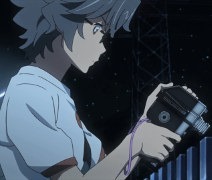 Kaito is a kind but nerdy guy who has a hobby of playing around with his late grandfather’s old 8mm handheld video camera. He happens to be out filming one night and gets fatally wounded during our lead alien girl Ichika’s crash landing on Earth. Fortunately, she has spiffy space medicine to heal him and he wakes up the next day in his own bed feeling like it was a dream. Lo and behold, Ichika shows up as a transfer student the next day at school and he is instantly intrigued and also feels she is vaguely familiar. On the way home, he offers to let her stay at his place since it turns out she is oddly homeless. And so it goes from there…
Kaito is a kind but nerdy guy who has a hobby of playing around with his late grandfather’s old 8mm handheld video camera. He happens to be out filming one night and gets fatally wounded during our lead alien girl Ichika’s crash landing on Earth. Fortunately, she has spiffy space medicine to heal him and he wakes up the next day in his own bed feeling like it was a dream. Lo and behold, Ichika shows up as a transfer student the next day at school and he is instantly intrigued and also feels she is vaguely familiar. On the way home, he offers to let her stay at his place since it turns out she is oddly homeless. And so it goes from there…
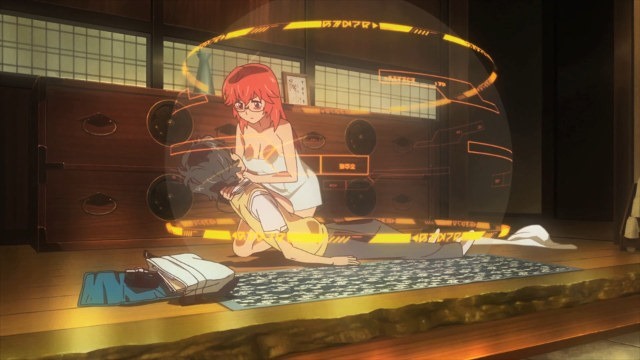


 Thus continues the tale of our violent model-by-day otaku-by-night heroine and her frustrated and confused brother. Kirino has returned from America ready to get back into her semi-secret hobby. What’s that? You don’t remember her actually leaving for America? Season two here picks up after the “True Route” extra four episodes, which weren’t televised (and thus sadly aren’t on Crunchyroll), the first of which is a replacement for the last televised episode. Just like the first season, there’s more hijinks, incest overtones, nerdy anime fandom, with a dash of S&M and Lolita. So, basically, more of the same, which could be a good or bad thing depending on how well you liked the first season.
Thus continues the tale of our violent model-by-day otaku-by-night heroine and her frustrated and confused brother. Kirino has returned from America ready to get back into her semi-secret hobby. What’s that? You don’t remember her actually leaving for America? Season two here picks up after the “True Route” extra four episodes, which weren’t televised (and thus sadly aren’t on Crunchyroll), the first of which is a replacement for the last televised episode. Just like the first season, there’s more hijinks, incest overtones, nerdy anime fandom, with a dash of S&M and Lolita. So, basically, more of the same, which could be a good or bad thing depending on how well you liked the first season.
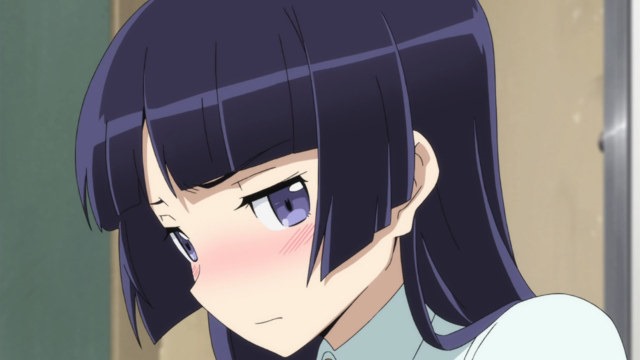
 The primary story arc takes a backseat and that’s a real shame. Finding out whether Kyosuke and Kuroneko will get together fo’ reals was the initial motivator but the series (well, Kuroneko herself) instead decides that resolving the long-standing rivalry between the primary siblings is more important. I’m actually okay with this turn as it probably is, realistically, the elephant in the room that must be dealt with if Kyosuke (or Kirino even) is to have any kind of serious relationship in the future. It really is a problem endemic to their current attitudes and personalities. Closet skeletons if you will.
The primary story arc takes a backseat and that’s a real shame. Finding out whether Kyosuke and Kuroneko will get together fo’ reals was the initial motivator but the series (well, Kuroneko herself) instead decides that resolving the long-standing rivalry between the primary siblings is more important. I’m actually okay with this turn as it probably is, realistically, the elephant in the room that must be dealt with if Kyosuke (or Kirino even) is to have any kind of serious relationship in the future. It really is a problem endemic to their current attitudes and personalities. Closet skeletons if you will.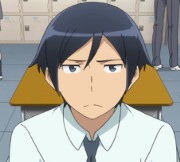 But worst of all is the deterioration of Kyosuke as a character and the increasing harem-ness of it all. As someone who I applauded in the first season as being respectable and level-headed even if occasionally a bit obnoxious (but realistically so for a teenage boy in his predicament), here he seems to descend slowly into wickedness. It’s by no means a plummeting descent like in
But worst of all is the deterioration of Kyosuke as a character and the increasing harem-ness of it all. As someone who I applauded in the first season as being respectable and level-headed even if occasionally a bit obnoxious (but realistically so for a teenage boy in his predicament), here he seems to descend slowly into wickedness. It’s by no means a plummeting descent like in 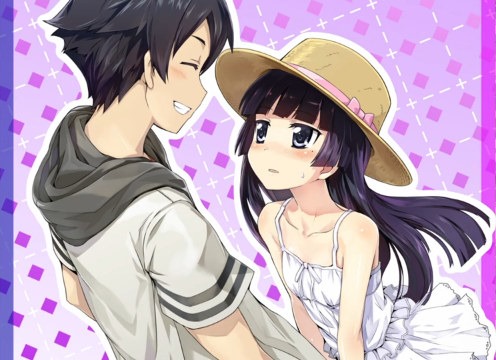
 Okay, seriously, I can’t review this one. It’s been months and months now and I don’t know why but I have struggled to find anything to say at length about Tengen Toppa Gurren Lagann. I’m not even sure why, either! I liked and enjoyed it just fine. Good animation, music/voices, characters... there’s lots to like and talk about here actually. It’s a solidly good series throughout.
Okay, seriously, I can’t review this one. It’s been months and months now and I don’t know why but I have struggled to find anything to say at length about Tengen Toppa Gurren Lagann. I’m not even sure why, either! I liked and enjoyed it just fine. Good animation, music/voices, characters... there’s lots to like and talk about here actually. It’s a solidly good series throughout.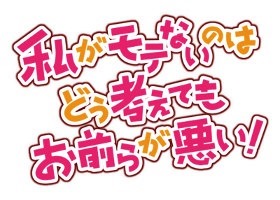 I was pleased to find the adaptation of Watashi ga Motenai no wa dō Kangaetemo Omaera ga Warui! (No Matter How I Look at It, It’s You Guys’ Fault I’m Not Popular!) to be quite good. One of the admittedly few series I’ve seen after reading the manga, WataMote has been a kind of quickie schadenfreude to me for some time. Of course, I’m sure it is for most people as that is the point. The basic premise, if you aren’t familiar with it, is the cringe-worthy misadventures of an incredibly pathetic human being named Kuroki Tomoko. She is truly a sad sack of a person. Not depressed or mopey, per se, but just… well, pathetic doesn’t even begin to describe her.
I was pleased to find the adaptation of Watashi ga Motenai no wa dō Kangaetemo Omaera ga Warui! (No Matter How I Look at It, It’s You Guys’ Fault I’m Not Popular!) to be quite good. One of the admittedly few series I’ve seen after reading the manga, WataMote has been a kind of quickie schadenfreude to me for some time. Of course, I’m sure it is for most people as that is the point. The basic premise, if you aren’t familiar with it, is the cringe-worthy misadventures of an incredibly pathetic human being named Kuroki Tomoko. She is truly a sad sack of a person. Not depressed or mopey, per se, but just… well, pathetic doesn’t even begin to describe her.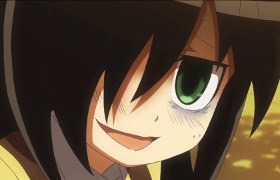 Of course, the cringe factor is the entire point: her boneheaded attempts at getting popular, creepy plans at finding tons of friends, and all of the other dumb crap she sets out to do make for a train wreck you cannot look away from. Unless you find her aggravatingly annoying, which I can understand (sorry, honey, we’ll watch something nicer together later, okay?). A lot of folks seem to find her repulsive… and yeah, she is. She is infuriatingly dumb. But that’s the point, so you either enjoy watching her be bad at life or… you find it stupid. There’s very little gray area here.
Of course, the cringe factor is the entire point: her boneheaded attempts at getting popular, creepy plans at finding tons of friends, and all of the other dumb crap she sets out to do make for a train wreck you cannot look away from. Unless you find her aggravatingly annoying, which I can understand (sorry, honey, we’ll watch something nicer together later, okay?). A lot of folks seem to find her repulsive… and yeah, she is. She is infuriatingly dumb. But that’s the point, so you either enjoy watching her be bad at life or… you find it stupid. There’s very little gray area here.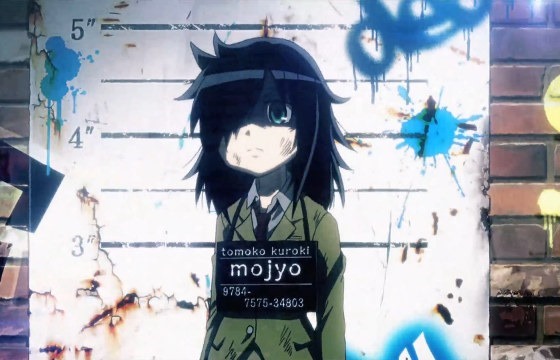
 “Fun” is about the best that can be said about the retardedly named Mondaiji-tachi ga Isekai Kara Kuru Sō Desu yo? (Problem Children are Coming from Another World, aren’t they?). It’s got just enough style to make it entertaining and the animation ain’t too shabby either. The characters waver between being genuinely interesting and intriguing to stupidly shallow (mostly this is the fault of dialog and scripting).
“Fun” is about the best that can be said about the retardedly named Mondaiji-tachi ga Isekai Kara Kuru Sō Desu yo? (Problem Children are Coming from Another World, aren’t they?). It’s got just enough style to make it entertaining and the animation ain’t too shabby either. The characters waver between being genuinely interesting and intriguing to stupidly shallow (mostly this is the fault of dialog and scripting).


 When I last spoke
When I last spoke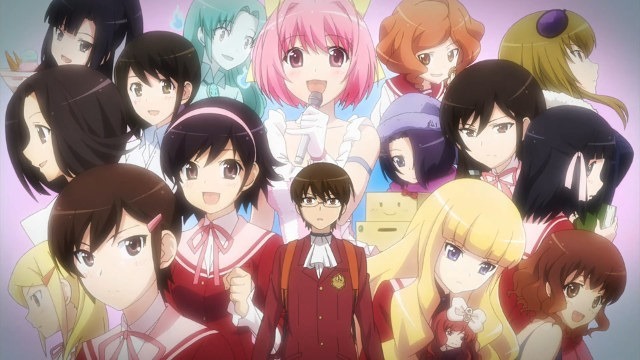
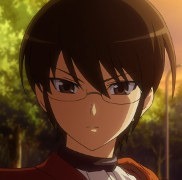 And you can tell. Episodes are densely packed with dialogue, new plot elements, and tons of new characters. It doesn’t help either that it quickly glosses over the huge amount that was skipped so coming from the end of the second season there are several new major characters all with established dynamics and relationships that we’re not privy to (unless you read the manga or possibly got your hands on the few OVAs put out in the intervening months). It is more than enough to leave you lost as a casual viewer.
And you can tell. Episodes are densely packed with dialogue, new plot elements, and tons of new characters. It doesn’t help either that it quickly glosses over the huge amount that was skipped so coming from the end of the second season there are several new major characters all with established dynamics and relationships that we’re not privy to (unless you read the manga or possibly got your hands on the few OVAs put out in the intervening months). It is more than enough to leave you lost as a casual viewer.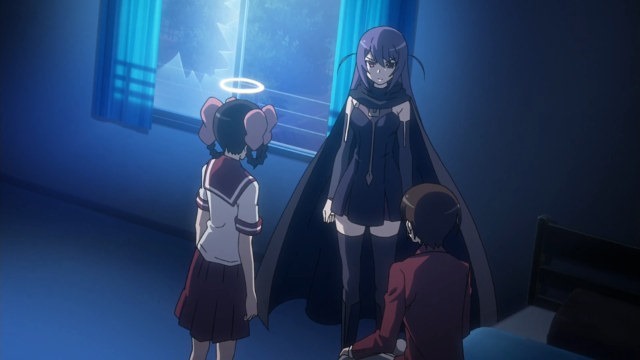

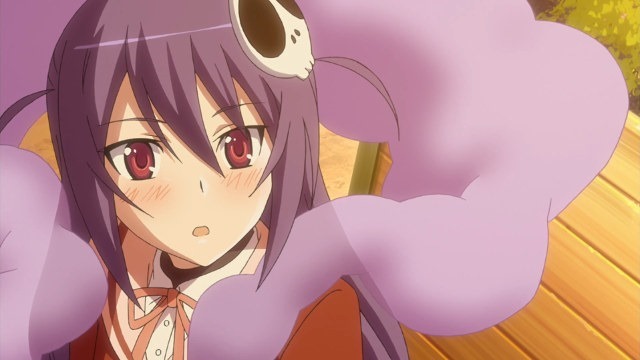
 It’s been well over a decade since I was a fairly hardcore To Heart fan. I had the whole series, the omakes, all of the soundtracks and singles, and even the making of interviews and stuff. I still have both of the official TV series art books on my bookshelf right now. I even drew fanart — yes, honest to god-awful fanart. Have I mentioned yet this was over a decade ago and I was barely out of my teens?
It’s been well over a decade since I was a fairly hardcore To Heart fan. I had the whole series, the omakes, all of the soundtracks and singles, and even the making of interviews and stuff. I still have both of the official TV series art books on my bookshelf right now. I even drew fanart — yes, honest to god-awful fanart. Have I mentioned yet this was over a decade ago and I was barely out of my teens? I still to this day have a huge soft spot for this series. While looking over some of the art in those books as well as on GIS, the nostalgia was drowning me. But, I’m
I still to this day have a huge soft spot for this series. While looking over some of the art in those books as well as on GIS, the nostalgia was drowning me. But, I’m 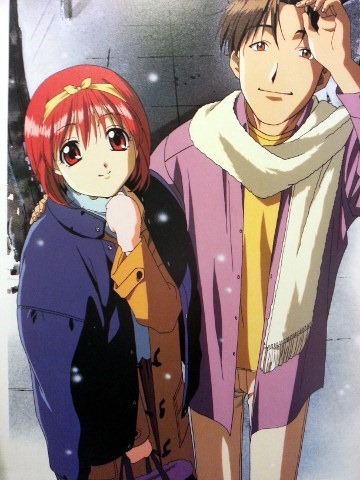 The story is a fairly standard harem with Hiroyuki as our male lead and a gaggle of diverse girls at his school. Hiroyuki is… well, bored is probably the best description of him. He’s slow moving, not an excited talker, and usually complains of being tired. Not surprisingly, he doesn’t make for a particularly good lead but he’s also not a bad guy and even has a sort of calm warmth to his interactions with the various girls. It’s comforting and subtle but rarely engaging; for the most part he’s a barely likable limp lead.
The story is a fairly standard harem with Hiroyuki as our male lead and a gaggle of diverse girls at his school. Hiroyuki is… well, bored is probably the best description of him. He’s slow moving, not an excited talker, and usually complains of being tired. Not surprisingly, he doesn’t make for a particularly good lead but he’s also not a bad guy and even has a sort of calm warmth to his interactions with the various girls. It’s comforting and subtle but rarely engaging; for the most part he’s a barely likable limp lead. Because there’s no dramatic climax, no big romantic d’awwplosion, or anything resembling drama really. It’s slow, subtle, and semi-sweet at best, and boring, monotonous, and bland at worst. But it does have some great quality pre-digital hand-drawn filmed animation. And it’s worth mentioning that the soundtrack is one of the best orchestral sets out there for any show. Seriously, it combines live instrumental pieces (not MIDI), with cohesive melodies that form leitmotifs and such, set the mood perfectly, and are generally just very sweet and well done. It’s still to this day one of my favorite anime soundtracks, one that can be enjoyed by anyone. “Ever Green Days” and “Yoake” are the very definition of heart-warming.
Because there’s no dramatic climax, no big romantic d’awwplosion, or anything resembling drama really. It’s slow, subtle, and semi-sweet at best, and boring, monotonous, and bland at worst. But it does have some great quality pre-digital hand-drawn filmed animation. And it’s worth mentioning that the soundtrack is one of the best orchestral sets out there for any show. Seriously, it combines live instrumental pieces (not MIDI), with cohesive melodies that form leitmotifs and such, set the mood perfectly, and are generally just very sweet and well done. It’s still to this day one of my favorite anime soundtracks, one that can be enjoyed by anyone. “Ever Green Days” and “Yoake” are the very definition of heart-warming. Cheesecake shows like this are a guilty pleasure of mine. They are the empty calories of anime, and just like a Twinkie they’ll leave you feeling disappointed with them and yourself. For all of the fancy packaging and appearance it rarely satisfies like you hope and it just makes you feel a bit ashamed since, let’s face it, this isn’t your first pre-packaged pastry. You knew better, but you thought maybe this time it would be different.
Cheesecake shows like this are a guilty pleasure of mine. They are the empty calories of anime, and just like a Twinkie they’ll leave you feeling disappointed with them and yourself. For all of the fancy packaging and appearance it rarely satisfies like you hope and it just makes you feel a bit ashamed since, let’s face it, this isn’t your first pre-packaged pastry. You knew better, but you thought maybe this time it would be different.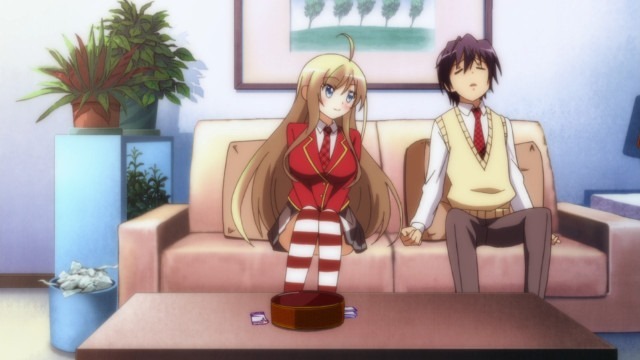

 Our hero boy suffers from some weird-ass affliction where he will randomly hear and see two choices (far less commonly it’ll be three or more) and he must pick one or face massive mental anguish until he does. Usually, it is a command or something he must say. Until one day where it causes a girl to fall from the sky and live with him claiming she’s there to help cure him but she got amnesia (TEEHEE) when she fell so all she really does is mooch off him, eat all his food (SO SILLY), and wear skimpy sleep clothes around his place (PARENTS ARE CONVENIENTLY OUT OF TOWN OF COURSE). Yeah, it’s one of those shows.
Our hero boy suffers from some weird-ass affliction where he will randomly hear and see two choices (far less commonly it’ll be three or more) and he must pick one or face massive mental anguish until he does. Usually, it is a command or something he must say. Until one day where it causes a girl to fall from the sky and live with him claiming she’s there to help cure him but she got amnesia (TEEHEE) when she fell so all she really does is mooch off him, eat all his food (SO SILLY), and wear skimpy sleep clothes around his place (PARENTS ARE CONVENIENTLY OUT OF TOWN OF COURSE). Yeah, it’s one of those shows.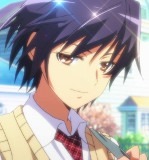 Unsurprisingly, it becomes a harem and the main character seems like he’d be alright but they never really do much with him or his forced choices. Oh sure, they happen a lot, but mostly it is just for awkward/silly comedic effect. He’s depicted as being attractive and popular but everyone finds him unapproachable because he’s always doing weird stuff (aka those wacky choices). The concept of the “Reject Five” is also a neat idea, that being a set of five infamous kids at school who are attractive but have something wrong with them that makes them undateable, but again this is never really utilized well either. Worse, their anti-group, the actual top five most dateable kids in school, are a painfully uninteresting lot.
Unsurprisingly, it becomes a harem and the main character seems like he’d be alright but they never really do much with him or his forced choices. Oh sure, they happen a lot, but mostly it is just for awkward/silly comedic effect. He’s depicted as being attractive and popular but everyone finds him unapproachable because he’s always doing weird stuff (aka those wacky choices). The concept of the “Reject Five” is also a neat idea, that being a set of five infamous kids at school who are attractive but have something wrong with them that makes them undateable, but again this is never really utilized well either. Worse, their anti-group, the actual top five most dateable kids in school, are a painfully uninteresting lot. Noucome’s dialog is good enough often enough, and while it doesn’t quite have the comedy chops of, say,
Noucome’s dialog is good enough often enough, and while it doesn’t quite have the comedy chops of, say, 
 But, and I know I end up saying this a lot, the short length here hurts. Ten episodes is not much and the story that is there really needs more time to fully resolve itself. Plus, it would probably allow them to, maybe, just maybe, do a little more relationship building. As it is they have, wisely or not, opted to keep things extremely light on the romance (except where comedy permits) since there isn’t enough time to really get into a true love triangle. It still probably counts as a harem show, but… not in the Love Hina way of really trying to justify each girl’s attraction.
But, and I know I end up saying this a lot, the short length here hurts. Ten episodes is not much and the story that is there really needs more time to fully resolve itself. Plus, it would probably allow them to, maybe, just maybe, do a little more relationship building. As it is they have, wisely or not, opted to keep things extremely light on the romance (except where comedy permits) since there isn’t enough time to really get into a true love triangle. It still probably counts as a harem show, but… not in the Love Hina way of really trying to justify each girl’s attraction. Kotoura-san is bright, colorful, fun, and sweet. It’s all around a decent show, though I wish it had more confidence. It seems scared to lean more on its drama/romance side and instead relies on far too much run-of-the-mill silly antics you’ve seen a hundred times before. Oh well.
Kotoura-san is bright, colorful, fun, and sweet. It’s all around a decent show, though I wish it had more confidence. It seems scared to lean more on its drama/romance side and instead relies on far too much run-of-the-mill silly antics you’ve seen a hundred times before. Oh well.


 Teekyu continues the crazy in two follow-up seasons. It is more of the same, which is to say still funny with dialog going Mach 2. Everything I said in the
Teekyu continues the crazy in two follow-up seasons. It is more of the same, which is to say still funny with dialog going Mach 2. Everything I said in the  Recorder and Randsell is another one that I
Recorder and Randsell is another one that I 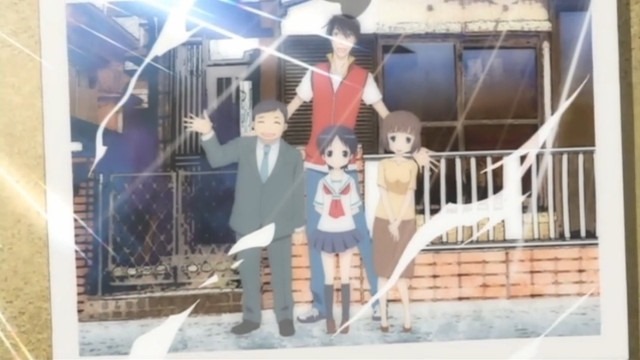
 Arata: The Legend is Fushigi Yuugi for boys. Oh wait, shit, it’s actually by
Arata: The Legend is Fushigi Yuugi for boys. Oh wait, shit, it’s actually by 
 Arata mirrors the plot of the author’s other work by having another school kid (this time it’s a boy!) get transported to a parallel world. Instead of ancient China it’s a… uh… non-specific fantasy world! Swords, magic, and warring factions! So basically the same just less racist perhaps. Admittedly, it is a much better attempt at an original world than her other series, as the hero-soul-infused swords and powers and so on are much more fun and action-y, if entirely predictable. There’s lots of good animation, colorful vistas, and well designed fantasy buildings, costumes, all that jazz. You’ll be positively shocked to hear that said boy is fated to be the wielder of the ultimate sword. I’ll wait while you pick your jaw up off of the floor.
Arata mirrors the plot of the author’s other work by having another school kid (this time it’s a boy!) get transported to a parallel world. Instead of ancient China it’s a… uh… non-specific fantasy world! Swords, magic, and warring factions! So basically the same just less racist perhaps. Admittedly, it is a much better attempt at an original world than her other series, as the hero-soul-infused swords and powers and so on are much more fun and action-y, if entirely predictable. There’s lots of good animation, colorful vistas, and well designed fantasy buildings, costumes, all that jazz. You’ll be positively shocked to hear that said boy is fated to be the wielder of the ultimate sword. I’ll wait while you pick your jaw up off of the floor. Unfortunately, the author/writers/whatever chose to follow the annoying, pathetic, wimpy, and uninteresting Arata from Earth rather than the infinitely more likable, cool, fun, and interesting Arata from the fantasy world. Occasionally they’ll show what he’s up to and he’s instantly a better lead but maybe 5-10% of the show is spent observing him… too bad! And this is all despite that fantasy Arata, now on Earth, spends time mostly doing the “oh look how strange his behaviors are! Earth Arata’s friends and schoolmates are so confused!!!!1” cliché thing. He’s still awesome and I wish he were the lead.
Unfortunately, the author/writers/whatever chose to follow the annoying, pathetic, wimpy, and uninteresting Arata from Earth rather than the infinitely more likable, cool, fun, and interesting Arata from the fantasy world. Occasionally they’ll show what he’s up to and he’s instantly a better lead but maybe 5-10% of the show is spent observing him… too bad! And this is all despite that fantasy Arata, now on Earth, spends time mostly doing the “oh look how strange his behaviors are! Earth Arata’s friends and schoolmates are so confused!!!!1” cliché thing. He’s still awesome and I wish he were the lead.
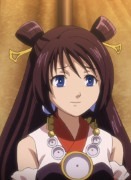 Whiny Earth Arata is boring and wears a similarly drab yellow-brown school outfit like FY’s Miki (probably as a nod). At least he has a decent supporting cast to help him limp through the script. Kotoha is unfortunately the shallow love interest but damn if she isn’t a delightful cutie, just don’t hold your breath for her to develop a personality beyond “faithful puppy”. Most of the rest of the Evil Dudes end up being a mix of cliché badassery that is fun if mostly uninspired. Even so, the animation and sound work and so on are quite good and it’s an overall enjoyable ride but… well, like I said, you can tell they were hoping to pick up viewership to fund sequel seasons because just like FY the story is drawn out and would probably need a few dozen more episodes to really resolve things.
Whiny Earth Arata is boring and wears a similarly drab yellow-brown school outfit like FY’s Miki (probably as a nod). At least he has a decent supporting cast to help him limp through the script. Kotoha is unfortunately the shallow love interest but damn if she isn’t a delightful cutie, just don’t hold your breath for her to develop a personality beyond “faithful puppy”. Most of the rest of the Evil Dudes end up being a mix of cliché badassery that is fun if mostly uninspired. Even so, the animation and sound work and so on are quite good and it’s an overall enjoyable ride but… well, like I said, you can tell they were hoping to pick up viewership to fund sequel seasons because just like FY the story is drawn out and would probably need a few dozen more episodes to really resolve things.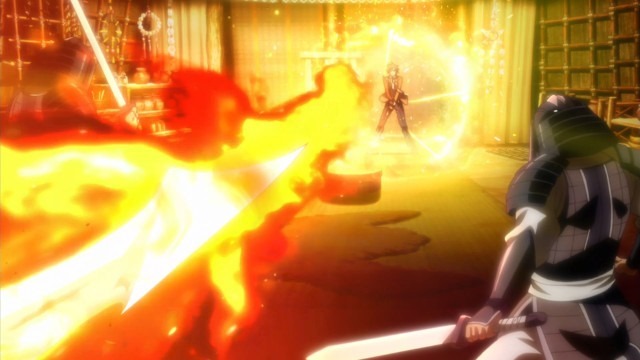
 Kanamemo has an all-star cast that can’t save it from mediocrity. Which is a real shame, too, because it can be kinda cute at times. It’s subtle, that’s for sure. You either like its simplistic mixture of slice-of-comedy and light fanservice/yuri, or you will either be bored, annoyed, or both. The story (what little there is) follows this young girl Kana after losing her parents and then finally last remaining relative and so is a bit lost in life and without a place to stay. She takes up a live-in job at a newspaper delivery place and it’s mostly then just following her getting acquainted with the weirdos that work and live there already. I mean, they have to be pretty weird themselves to openly take in an underage girl off the streets, right?
Kanamemo has an all-star cast that can’t save it from mediocrity. Which is a real shame, too, because it can be kinda cute at times. It’s subtle, that’s for sure. You either like its simplistic mixture of slice-of-comedy and light fanservice/yuri, or you will either be bored, annoyed, or both. The story (what little there is) follows this young girl Kana after losing her parents and then finally last remaining relative and so is a bit lost in life and without a place to stay. She takes up a live-in job at a newspaper delivery place and it’s mostly then just following her getting acquainted with the weirdos that work and live there already. I mean, they have to be pretty weird themselves to openly take in an underage girl off the streets, right?

 The cast is strong, though, did I mention that? Especially the ending song being heavy-lifted by the great Horie Yui. You’ve even got heavy hitters like Kitamura Eri and the always delightful Endō Aya. But, even so, I found the main character Kana’s voice grating. Her voice actress, Toyosaki Aki (you chumps probably know her best as Yui from K-On!) is certainly skilled in plenty of other roles but here she’s having to do too much falsetto to appear much younger (playing a thirteen year-old after all) and it just made my ears bleed after awhile.
The cast is strong, though, did I mention that? Especially the ending song being heavy-lifted by the great Horie Yui. You’ve even got heavy hitters like Kitamura Eri and the always delightful Endō Aya. But, even so, I found the main character Kana’s voice grating. Her voice actress, Toyosaki Aki (you chumps probably know her best as Yui from K-On!) is certainly skilled in plenty of other roles but here she’s having to do too much falsetto to appear much younger (playing a thirteen year-old after all) and it just made my ears bleed after awhile. But despite all the VA strength everyone is stuck with pretty bland characters to play and an even blander script. We get a seemingly endless onslaught of older girl Haruka is a lesbo-perv jokes, Saki is a precocious kid-boss isn’t that ironic, Hinata is boyish and too concerned with money, Yuuki and Yume as the token girl couple, and Kana is… well, Kana is the biggest problem here. She’s just a boring as hell character. She’s plain looking, has barely anything resembling an engaging personality beyond timid and clumsy but that humor well dries up fast. Mostly she is just dull and lacks charisma and yet she’s on the screen so much. Did I already mention that her voice is also super annoying? The tsundere Mika would have been a million times better as a lead and it’s painfully obvious every time she’s involved in an episode and we get glimpses at how much more interesting of a character she is. Or, I guess, could be.
But despite all the VA strength everyone is stuck with pretty bland characters to play and an even blander script. We get a seemingly endless onslaught of older girl Haruka is a lesbo-perv jokes, Saki is a precocious kid-boss isn’t that ironic, Hinata is boyish and too concerned with money, Yuuki and Yume as the token girl couple, and Kana is… well, Kana is the biggest problem here. She’s just a boring as hell character. She’s plain looking, has barely anything resembling an engaging personality beyond timid and clumsy but that humor well dries up fast. Mostly she is just dull and lacks charisma and yet she’s on the screen so much. Did I already mention that her voice is also super annoying? The tsundere Mika would have been a million times better as a lead and it’s painfully obvious every time she’s involved in an episode and we get glimpses at how much more interesting of a character she is. Or, I guess, could be. Morita-san wa Mukuchi (lit. Morita is Reticent) really is quiet and it turns out that doesn’t make for a particularly interesting lead. Oh, it’s a slightly cute and mildly amusing little series of three-minute episodes. But then it is over and… yeah. Well. That’s that. Kinda nice but dreadfully forgettable. I appreciated the
Morita-san wa Mukuchi (lit. Morita is Reticent) really is quiet and it turns out that doesn’t make for a particularly interesting lead. Oh, it’s a slightly cute and mildly amusing little series of three-minute episodes. But then it is over and… yeah. Well. That’s that. Kinda nice but dreadfully forgettable. I appreciated the 
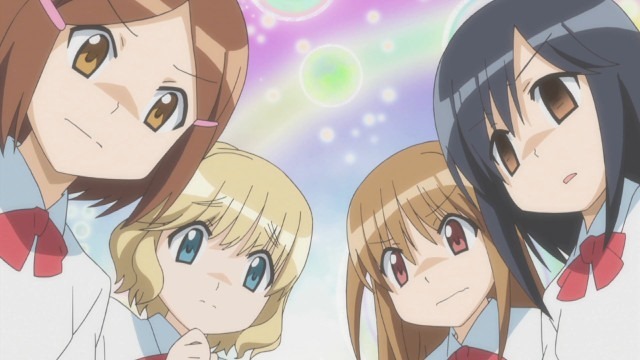
 It’s difficult to place this show. On the surface it is an episodic wacky slice-of-life comedy. Only it eschews most of the cliché settings in favor of taking place under a bridge and starring a dozen or so weirdos. And they really are weirdos in the strongest sense. These aren’t your typical characters who are portrayed as “wild and zany” but still lead relatively normal lives going to school/work and so on. No, these people live under a bridge so you know already there is something wrong with them as they willfully choose not to participate in normal society. And it is a deliberate choice because none of them seem to be poor hobos either. Well, probably.
It’s difficult to place this show. On the surface it is an episodic wacky slice-of-life comedy. Only it eschews most of the cliché settings in favor of taking place under a bridge and starring a dozen or so weirdos. And they really are weirdos in the strongest sense. These aren’t your typical characters who are portrayed as “wild and zany” but still lead relatively normal lives going to school/work and so on. No, these people live under a bridge so you know already there is something wrong with them as they willfully choose not to participate in normal society. And it is a deliberate choice because none of them seem to be poor hobos either. Well, probably.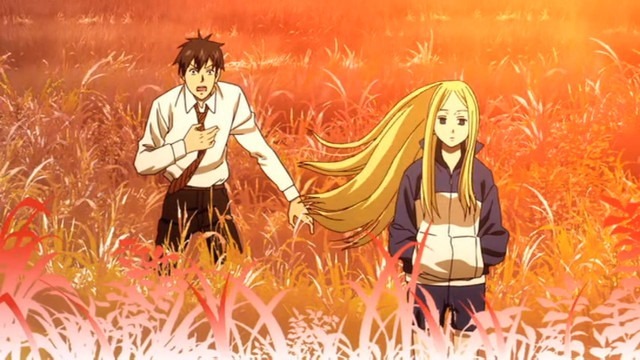

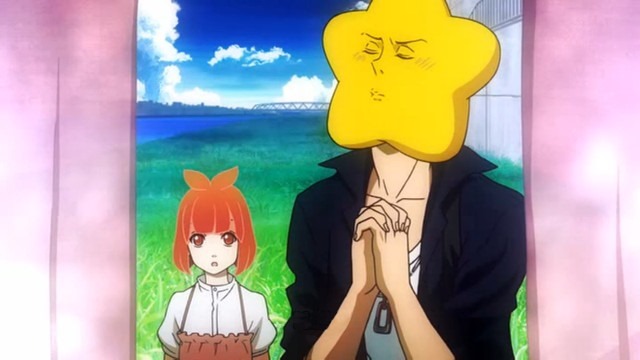


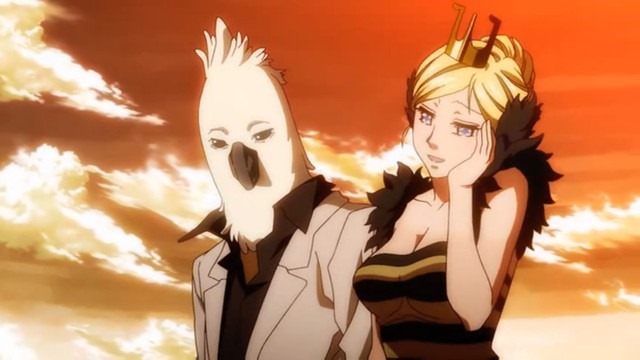
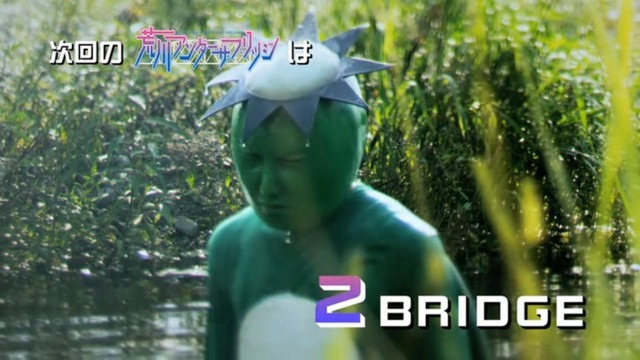
 Servant x Service is basically Working!! if it was set in a government welfare office instead of a family restaurant. In fact, it’s not really surprising there are a lot of obvious similarities in style, humor, and so on, because both are based on manga by the same author. I was quite positive in
Servant x Service is basically Working!! if it was set in a government welfare office instead of a family restaurant. In fact, it’s not really surprising there are a lot of obvious similarities in style, humor, and so on, because both are based on manga by the same author. I was quite positive in 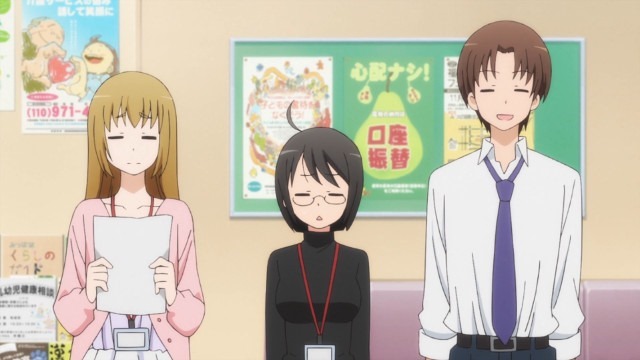
 GA Geijutsuka Art Design Class works despite itself at every turn and was a delightful little series overall. Its animation is adequate at best, it’s a very simplistic slice-of-life show full of standard archetype characters, and it’s an adaptation of a yonkoma. But it manages to find ways to do fun artistic things despite the mediocre budget, weave together some fun and amusing character dynamics, and blend its erratic four-panel narrative roots into full episodes held together by cohesive themes and events. No small task, that’s for sure, and I applaud it for making such a tasty dish despite starting with suspect ingredients.
GA Geijutsuka Art Design Class works despite itself at every turn and was a delightful little series overall. Its animation is adequate at best, it’s a very simplistic slice-of-life show full of standard archetype characters, and it’s an adaptation of a yonkoma. But it manages to find ways to do fun artistic things despite the mediocre budget, weave together some fun and amusing character dynamics, and blend its erratic four-panel narrative roots into full episodes held together by cohesive themes and events. No small task, that’s for sure, and I applaud it for making such a tasty dish despite starting with suspect ingredients.
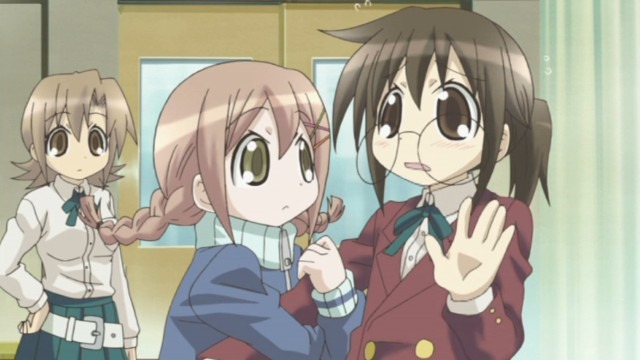
 Dai Mahō-Tōge (released here as Magical Witch Punie-chan) is a show that feels like it almost should have been released a decade before it was. A mid-2000s era title, it has the wacky parody-filled nonsense of a lot of silly things I remember seeing so long ago. It does have a bit more modern polish style-wise, which is the primary indication it’s not actually from the nineties after all.
Dai Mahō-Tōge (released here as Magical Witch Punie-chan) is a show that feels like it almost should have been released a decade before it was. A mid-2000s era title, it has the wacky parody-filled nonsense of a lot of silly things I remember seeing so long ago. It does have a bit more modern polish style-wise, which is the primary indication it’s not actually from the nineties after all.
 Shin Sekai Yori (translated as From the New World) is nothing short of a fantastic piece of science fiction anime. While it can be a bit slow here and there I didn’t much care because it spent its twenty-five episodes building up a fair number of characters and a world to put them in. And boy, what a world. One of its strengths (and damn near a requirement if you’re setting out to do sci-fi) is its richly realized world, history, races, and so much more. It gives just enough exposition at the right times to keep you going but without explaining too much too soon, letting instead the plot hint or reveal the rest. It even does all this while skipping ahead in time at least two major times, covering the main cast at the ages of roughly twelve, fourteen, and later their mid twenties.
Shin Sekai Yori (translated as From the New World) is nothing short of a fantastic piece of science fiction anime. While it can be a bit slow here and there I didn’t much care because it spent its twenty-five episodes building up a fair number of characters and a world to put them in. And boy, what a world. One of its strengths (and damn near a requirement if you’re setting out to do sci-fi) is its richly realized world, history, races, and so much more. It gives just enough exposition at the right times to keep you going but without explaining too much too soon, letting instead the plot hint or reveal the rest. It even does all this while skipping ahead in time at least two major times, covering the main cast at the ages of roughly twelve, fourteen, and later their mid twenties.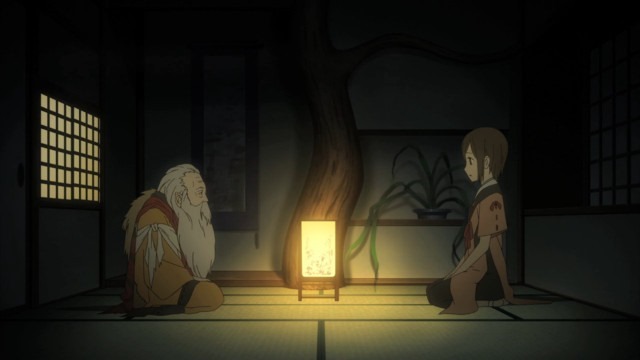
 Don’t let the sci-fi tag dissuade you: this isn’t a space opera like Mobile Suit Gundam or a cyberpunk thriller like Ghost in the Shell. While those are fine and laudable series/genres themselves, I know they aren’t everyone’s cup of tea. SSY is rich, thought-provoking, dramatic, with splashes of cleverness and intrigue. It is simultaneously a character-driven and story-driven plot, focusing on a core group of friends and their relationships but at the same time placing them in a world that is far bigger in scope than them with political maneuvering, ethical quandaries, and so much more. And, like a good sci-fi story, it’s all used to explore concepts and ideas that are very much present today, like slavery, racism, sexuality, and individuality.
Don’t let the sci-fi tag dissuade you: this isn’t a space opera like Mobile Suit Gundam or a cyberpunk thriller like Ghost in the Shell. While those are fine and laudable series/genres themselves, I know they aren’t everyone’s cup of tea. SSY is rich, thought-provoking, dramatic, with splashes of cleverness and intrigue. It is simultaneously a character-driven and story-driven plot, focusing on a core group of friends and their relationships but at the same time placing them in a world that is far bigger in scope than them with political maneuvering, ethical quandaries, and so much more. And, like a good sci-fi story, it’s all used to explore concepts and ideas that are very much present today, like slavery, racism, sexuality, and individuality.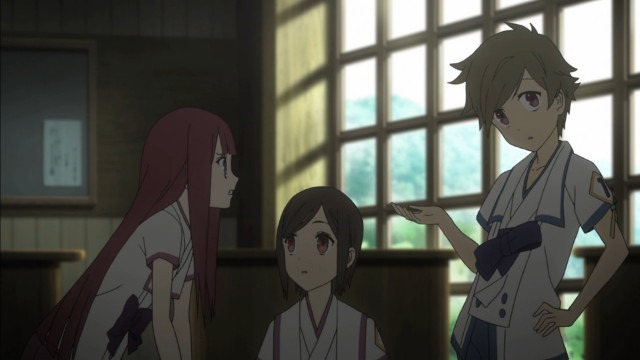
 All of this, however, is merely the backdrop setting to six childhood friends now entering school to begin to learn to control their mental power and the events that get them involved way over their heads in truths long hidden and forgotten. There’s a lot of character dynamics, relationships, and drama as their friendship and love is tested both by growing up but also by the larger story happening around and to them.
All of this, however, is merely the backdrop setting to six childhood friends now entering school to begin to learn to control their mental power and the events that get them involved way over their heads in truths long hidden and forgotten. There’s a lot of character dynamics, relationships, and drama as their friendship and love is tested both by growing up but also by the larger story happening around and to them.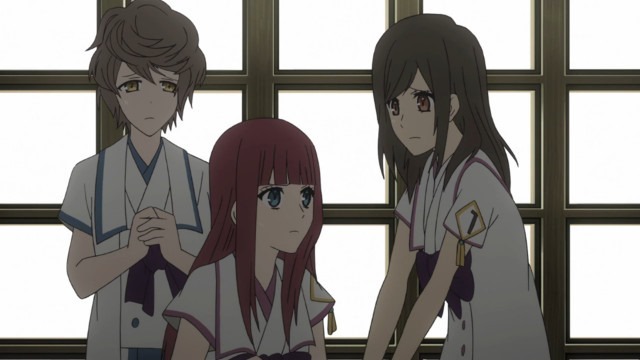
 Gen'ei o Kakeru Taiyō (translated as Day Break Illusion) feels like a good mix of
Gen'ei o Kakeru Taiyō (translated as Day Break Illusion) feels like a good mix of 

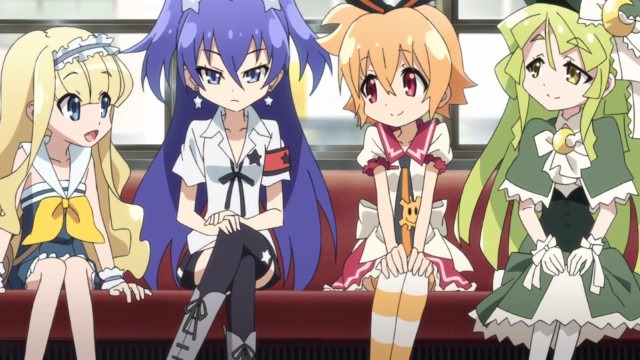
 Love Lab turned out to be far better than I anticipated as well as not being the
Love Lab turned out to be far better than I anticipated as well as not being the  The story involves Riko, nicknamed “Wild Kid”, a popular tomboy who ends up selling herself as a bit of a romance expert. She gets involved with the well-loved but secretly-weird princess of the school, Maki, who is engaging in some experiments of which the show is so named. Through the course of the show, Riko ends up becoming great friends with the small club of girls all endeavoring to learn the ways of love and romance from Riko and as a result she ends up digging herself deeper and deeper into the lie the more she cherishes their friendship and thus the more afraid she becomes of finally coming clean.
The story involves Riko, nicknamed “Wild Kid”, a popular tomboy who ends up selling herself as a bit of a romance expert. She gets involved with the well-loved but secretly-weird princess of the school, Maki, who is engaging in some experiments of which the show is so named. Through the course of the show, Riko ends up becoming great friends with the small club of girls all endeavoring to learn the ways of love and romance from Riko and as a result she ends up digging herself deeper and deeper into the lie the more she cherishes their friendship and thus the more afraid she becomes of finally coming clean.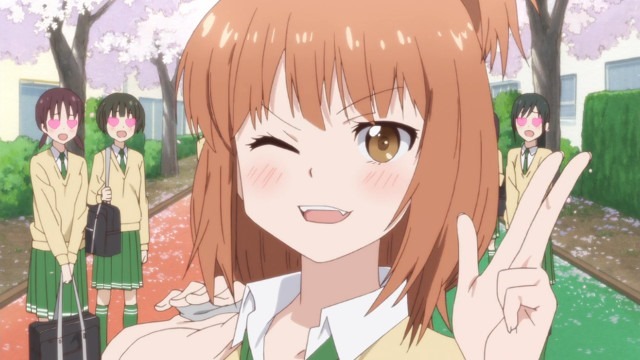
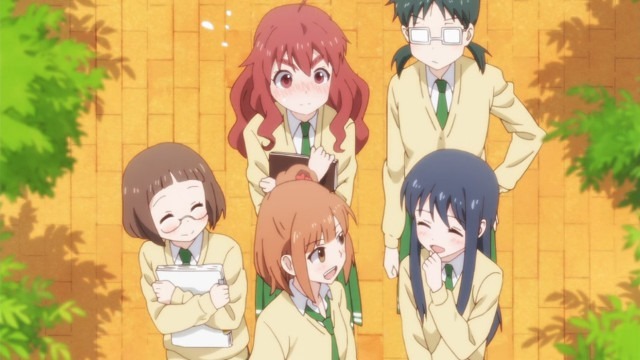
 I’m only a year late to the party, especially considering my
I’m only a year late to the party, especially considering my 
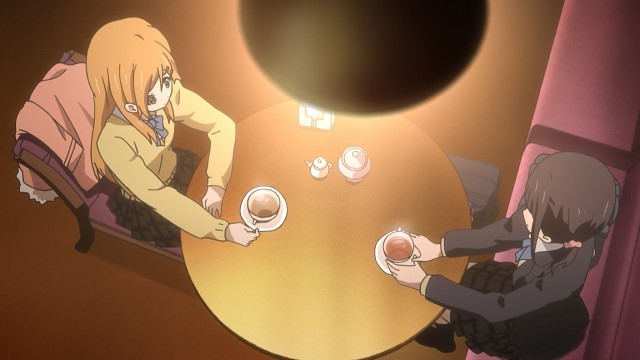
 Although, the little that does happen outside of Iori being a bitch is quite satisfying. If there was ever any doubt that Sawashiro Miyuki was an absolutely fantastic voice actress and that, correspondingly, her character Inaba was hands down the most interesting of the five main characters on Kokoro Connect this OVA arc seals the deal. (You’ll note I said just as much when reviewing the TV series as well.) To be clear: of the non-Iori drama bits, Inaba proves to be delightful and endearing. I don’t want to spoil anything but damn, she already was my favorite of the bunch and this extra story just sends her way above that even.
Although, the little that does happen outside of Iori being a bitch is quite satisfying. If there was ever any doubt that Sawashiro Miyuki was an absolutely fantastic voice actress and that, correspondingly, her character Inaba was hands down the most interesting of the five main characters on Kokoro Connect this OVA arc seals the deal. (You’ll note I said just as much when reviewing the TV series as well.) To be clear: of the non-Iori drama bits, Inaba proves to be delightful and endearing. I don’t want to spoil anything but damn, she already was my favorite of the bunch and this extra story just sends her way above that even. Not to say the rest are slouches: granted, some of the cast just don’t really manage to get their time in the limelight and so don’t stand out so much (this would be, unfortunately, Aoki and to a slightly lesser extent Kiriyama). There’s a lot of excellent drama and well written dialog, which is what made me praise the original televised series so much. It’s still just as spot-on but, admittedly, the phenomenon and the tension this time around are a bit secondary and forced, respectively. Most of the focus isn’t on the far more interesting telepathy bit and what is the focus is a much too dumb “Iori is being difficult because... stuff” angle.
Not to say the rest are slouches: granted, some of the cast just don’t really manage to get their time in the limelight and so don’t stand out so much (this would be, unfortunately, Aoki and to a slightly lesser extent Kiriyama). There’s a lot of excellent drama and well written dialog, which is what made me praise the original televised series so much. It’s still just as spot-on but, admittedly, the phenomenon and the tension this time around are a bit secondary and forced, respectively. Most of the focus isn’t on the far more interesting telepathy bit and what is the focus is a much too dumb “Iori is being difficult because... stuff” angle.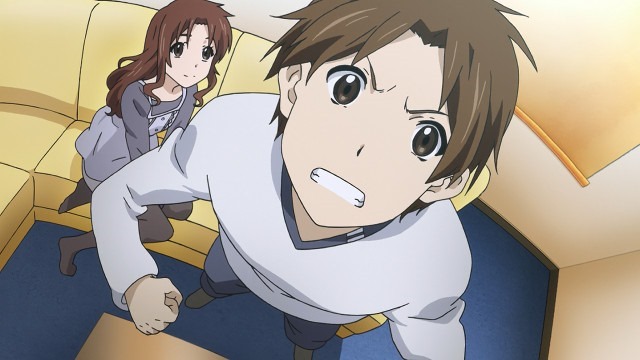
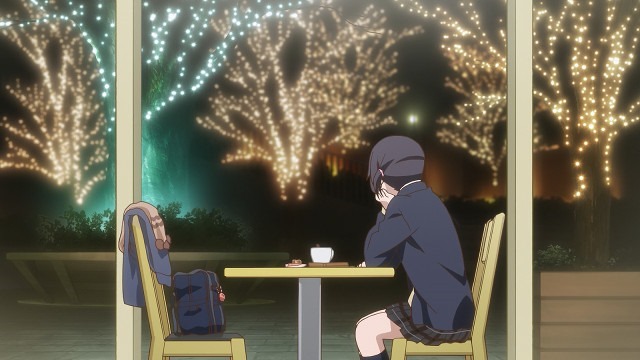
 The synopsis of this movie is woefully inadequate. No, really,
The synopsis of this movie is woefully inadequate. No, really, 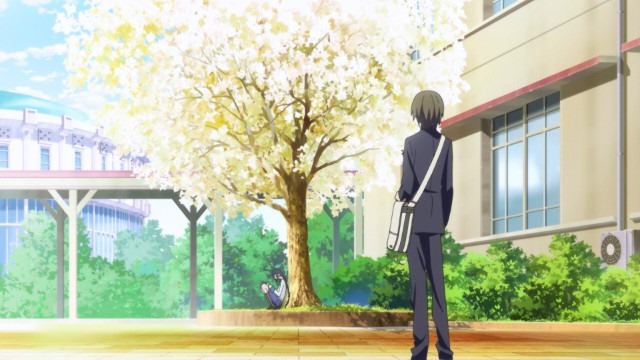
 I was damn near sure Touko was not real and only existed in Inoue’s mind like a literature muse or something. She never really interacted in the movie with anyone else for most of the running time, like some sort of Sixth Sense thing. It isn’t until the planetarium scene near the end… but then she’s suddenly not there and the prior love confession seems… to have… not happened actually? What? I was so sure she was just in his mind. And the train scene. And so much else… what… And I love Hirano Aya’s performances, so it’s too bad her ex-girlfriend character here was annoying and confusing (yes, again). The two leads are void of much personality. Lead boy Inoue is limp and pathetic and even gets called out on being no better than acting like a supplicant dog. Everything is so disjointed, who knows what anyone’s motivations are, and since none of it manages to coalesce into anything concrete the “big payoff” third act stuff just falls flat and comes off as awkward, embarrassing, and confusing. Which is made all the worse by the fact that I was trying so hard to figure out if there was a twist or catch and I thought I almost had it figured out (her being not real) and in the end it was nothing of the sort, leaving me feeling cheated and misled.
I was damn near sure Touko was not real and only existed in Inoue’s mind like a literature muse or something. She never really interacted in the movie with anyone else for most of the running time, like some sort of Sixth Sense thing. It isn’t until the planetarium scene near the end… but then she’s suddenly not there and the prior love confession seems… to have… not happened actually? What? I was so sure she was just in his mind. And the train scene. And so much else… what… And I love Hirano Aya’s performances, so it’s too bad her ex-girlfriend character here was annoying and confusing (yes, again). The two leads are void of much personality. Lead boy Inoue is limp and pathetic and even gets called out on being no better than acting like a supplicant dog. Everything is so disjointed, who knows what anyone’s motivations are, and since none of it manages to coalesce into anything concrete the “big payoff” third act stuff just falls flat and comes off as awkward, embarrassing, and confusing. Which is made all the worse by the fact that I was trying so hard to figure out if there was a twist or catch and I thought I almost had it figured out (her being not real) and in the end it was nothing of the sort, leaving me feeling cheated and misled.